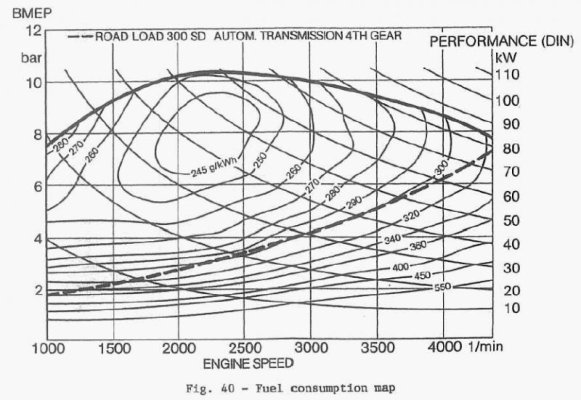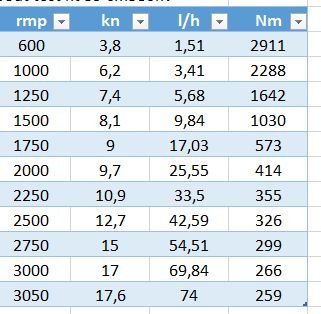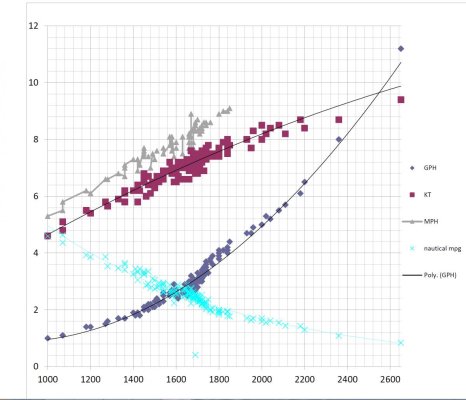ScottH
Veteran Member
Hello y'all once again. Still shopping for a 40'-45' trawler or motoryacht, and now I'm trying to figure out what size engines we should look for.
A number of people have told me that since diesels are meant to run hard, it's best to get a boat with the smallest engines that will deliver the desired cruising speeds: because a smaller engine running near capacity will be the most fuel efficient and won't build up carbon deposits. They say larger engines are going to use lots more fuel even at slow speeds.
Other people have told me that in boats with similar hull shapes and displacements, larger engines running at lower RPM's will get just as good fuel economy as smaller ones running at higher RPM's (to deliver the same speed), and that winding the larger engines up periodically for short stretches will blow out the carbon without killing your fuel economy. They recommend buying a boat with larger engines.
We started out looking at boats with no more than 150HP engines because we expect to cruise at no more than 6-8 knots. But I would love to have some extra speed in reserve if I can have it and still get good fuel economy at lower speeds.
If you have a cruising yacht with engines of 175HP or larger, I would be very interested in any information you can share regarding how fast you typically cruise, what RPM you typically run at, what kind of fuel economy you achieve at that RPM, and particularly what kind of fuel economy you achieve if you do cruise at 6-8 knots.
Thanks for taking the time!
A number of people have told me that since diesels are meant to run hard, it's best to get a boat with the smallest engines that will deliver the desired cruising speeds: because a smaller engine running near capacity will be the most fuel efficient and won't build up carbon deposits. They say larger engines are going to use lots more fuel even at slow speeds.
Other people have told me that in boats with similar hull shapes and displacements, larger engines running at lower RPM's will get just as good fuel economy as smaller ones running at higher RPM's (to deliver the same speed), and that winding the larger engines up periodically for short stretches will blow out the carbon without killing your fuel economy. They recommend buying a boat with larger engines.
We started out looking at boats with no more than 150HP engines because we expect to cruise at no more than 6-8 knots. But I would love to have some extra speed in reserve if I can have it and still get good fuel economy at lower speeds.
If you have a cruising yacht with engines of 175HP or larger, I would be very interested in any information you can share regarding how fast you typically cruise, what RPM you typically run at, what kind of fuel economy you achieve at that RPM, and particularly what kind of fuel economy you achieve if you do cruise at 6-8 knots.
Thanks for taking the time!

 Could cruise at 8 knots using 8 gph. 12 knots is 22 gph. 2x1500 hp.
Could cruise at 8 knots using 8 gph. 12 knots is 22 gph. 2x1500 hp. 



